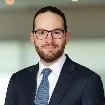This week, the Ninth Circuit takes a close look at a sizable antitrust jury award, and explains what constitutes a tax “return” for purposes of bankruptcy law.
OPTRONIC TECHNOLOGIES, INC v. NINGBO SUNNY ELECTRONIC CO. LTD.
The Court held that sufficient evidence supported a jury verdict holding telescope manufacturers liable for antitrust violations.
The panel: Judges Tashima, Gould, and Rakoff (S.D.N.Y.), with Judge Gould writing the opinion.
Key highlight: “The documentary evidence and expert testimony that Orion presented during trial . . . showed that Sunny had the technical capacity to manufacture the same telescopes as Synta, but chose not to. . . . Other emails between Sunny and Synta indicate that they had agreed to divide customers. . . . This is quintessential evidence of a market allocation conspiracy.”
Background: Plaintiff Optronic Technologies, Inc., also known as Orion Telescopes & Binoculars (“Orion”), designs and markets telescopes. Orion sued defendants Ningbo Sunny Electronic Co., Ltd. and Sunny Optics, Inc., (collectively “Sunny”), manufacturers of telescopes, for violations of federal antitrust law and California laws arising out of Sunny's alleged conspiracy with other telescope manufacturers (“Synta”) in relation to Sunny's acquisition of telescope manufacturer/distributor Meade, and other conduct. Before trial, the district court granted partial summary judgment to Sunny, holding that Orion lacked standing to challenge Sunny's conduct on the ground that it prevented Orion from acquiring Meade, but holding that Orion may still have been harmed by Sunny's acquisition of Meade because it concentrated the telescope market. After a trial, the jury found Sunny liable and awarded Orion $16.8 million in damages. The district court trebled the damages pursuant to the Clayton Act, and awarded Orion $50.4 million, but then deducted $3.1 million based on the value of a settlement and supply agreement Orion had reached with Synta. The court refused to deduct the profits Orion derived from the supply agreement because Sunny had the burden of proof and, the court concluded, the expert declaration it submitted to support this argument was untimely. The district court also granted Orion an injunction that ordered Sunny to supply Orion and Meade at non-discriminatory terms for five years; and not communicate with Synta to the extent such communication violated federal antitrust law.
Result: The Ninth Circuit vacated only with regard to the valuation of the settlement set-off, which was remanded for further proceedings, and affirmed in all other respects.
The Court first rejected Sunny's challenges to the district court's evidentiary rulings as to experts—holding that the testimony of Orion's telescope manufacturing expert and damages expert was properly admitted, and the testimony of one of Sunny's proposed rebuttal experts was properly excluded. The Court further held that the district court's mid-trial curative instruction limiting the jury's consideration of the testimony of one of Sunny's rebuttal witnesses was proper.
The Court also upheld that jury's verdict as based on sufficient evidence. The Court thus rejected Sunny's argument that Orion failed to present sufficient evidence to support the jury's verdict in Orion's favor on its Sherman Act § 1 claim. The Court explained that the elements of a Section 1 claim are: (1) a contract, combination, or conspiracy (2) that unreasonably restrained trade under either a per se rule of illegality or a rule of reason analysis, and (3) that the restraint affected interstate commerce. The Court noted that horizontal price fixing and market allocation are per se Section 1 violations. Contrary to Sunny's argument, Orion had presented sufficient evidence that Sunny conspired with horizontal competitor Synta to ensure that Sunny acquired Meade to protect their market share and guarantee that a competitor would not buy Meade. Orion also presented sufficient evidence from which the jury could properly find, as it alternatively did, that Sunny conspired with a competitor to fix prices and credit terms. And Orion presented substantial evidence to support the jury's verdict that Sunny agreed with Synta, a horizontal competitor, either not to compete with one another in the market, or to divide customers or potential customers between them—another per se Section 1 violation.
The Court also rejected Sunny's challenge to the jury's verdict in favor of Orion on its Sherman Act § 2 claim. The court explained that Section 2 makes it illegal to “monopolize, or attempt to monopolize, or combine or conspire with any other person or persons, to monopolize any part of the trade or commerce.” The jury could have found that Sunny and Synta intended for Sunny to have a monopoly over the telescope manufacturing market, and thus the jury's verdict did not depend on an impermissibly joint monopoly theory. And Orion had not failed to define the relevant market, but instead established the relevant market through expert testimony. Likewise, sufficient evidence supported the jury's finding that Sunny expressed a specific intent to gain monopoly power. Finally, Orion also presented sufficient evidence to establish that Sunny was dangerously close to attaining monopoly power. The evidence Orion presented at trial established that Sunny's market share was above the forty-four percent market the Court has recognized as sufficient to establish a dangerous proximity to market power at the relevant time and there had been no new entrants to the telescope manufacturing market for ten years.
The Court also denied Sunny's request for a new trial on Orion's Clayton Act § 7 claim on the ground that Orion had not proved damages from this violation as required. On this claim, the jury found Sunny violated Clayton Act § 7 because there was a reasonable likelihood that Sunny's acquisition of Meade would substantially reduce competition in the telescope manufacturing market or create a monopoly. Orion had presented evidence of antitrust injury on this claim on the theory that Sunny's acquisition of Meade reduced the number of major telescope manufacturers from three to two, enabling Sunny and its competitors to charge supracompetitive prices for telescopes, which was a major factor in the overcharges that Orion experienced in its business dealings with Sunny, Synta, and Meade.
The Court also concluded that the injunctive relief granted by the district court was not overbroad. The Court stressed that a district court may order an injunction beyond a simple proscription against the precise conduct previously pursued and that the reviewing court asks only if the relief is a reasonable method of eliminating the consequences of the illegal conduct. In particular, the district court validly ordered Sunny to supply Meade on non-discriminatory terms because the telescope manufacturing market would become over-concentrated if Sunny eliminated Meade. And the district court properly ordered Sunny to supply Orion even though it had earlier dismissed Orion's refusal-to-deal claim because the district court can order conduct to avoid a recurrence of the antitrust violation and eliminate its consequences and here, the jury had found that Orion had been forced to pay inflated prices as a result of the market power exerted by Sunny and Synta following the unlawful Meade acquisition.
The Court also disagreed that Orion could not receive damages arising after September 2016, when Sunny contended any conspiracy must have ended, because Orion offered substantial evidence that the conspiracy had continued after 2016 because although Synta had at that point agreed to supply Orion on most favored customer terms, it actually kept overcharging Orion. And even if the conspiracy had ended in 2016, Orion could recover post-2016 damages because it continued to suffer economic harm from the harm to competition caused by the illegal concerted activity. The Court found, however, that the district court had abused its discretion in excluding a declaration of Sunny's expert in support of Sunny's post-trial motion to alter or amend the judgment as untimely disclosed because the expert had been timely disclosed. The Court accordingly remanded for the district court to reconsider whether to accept the expert's declaration.
Turning to Orion's cross-appeal challenging the district court's entry of summary judgment for Sunny on the issue of whether Sunny caused Orion's failure to acquire Meade, the Court again affirmed. The Court explained that Orion did not have antitrust standing to raise the issue because the timing of bids created a strong presumption that Orion would not have acquired Meade even if Sunny had not outbid another competitor for Meade and thus there was no genuine dispute of material fact on whether Sunny prevented Orion from buying Meade.
RUDOLF SIENEGA V. STATE OF CALIFORNIA FTB
The Court holds that a Chapter 7 debtor's state tax debts were non-dischargeable where the debtor notified the California Franchise Tax Board of a federal tax adjustment, but did not pay state taxes.
The panel: Chief Judge Thomas, and Judges McKeown and Molloy (D. Mont.), with Chief Judge Thomas writing the opinion.
Key highlight: “[T]he [Bankruptcy Appellate Panel] correctly concluded that sending faxes was not the equivalent of paying taxes. Therefore, it properly affirmed the holding of the bankruptcy court that the California state taxes that Sienega owed were nondischargeable in bankruptcy.”
Background: Rudolf Sienega failed to file California state income tax returns for 1990, 1991, 1992, and 1996. The IRS made upward adjustments in Sienega's federal tax liability for those years, and the U.S. Tax Court later ruled that Sienega was liable for additional accuracy-related penalties. After Sienega's counsel notified the Franchise Tax Board of the adjustments to his income, the Board issued a notice of proposed assessment to Sienega for each of the four tax years. Sienega later filed for bankruptcy. The Board filed an adversary complaint seeking to have Sienega's outstanding state tax debts declared nondischargeable on the ground that he had not filed state tax returns in any of the relevant years. The bankruptcy court granted summary judgment to the Board, rejecting Sienega's argument that notifying Board about the income adjustments entitled him to a discharge.
Result: The Ninth Circuit affirmed. The Court explained that Section 523(a)(1)(B) of the Bankruptcy Code bars the discharge of tax debts for which the debtor did not file a “return.” A paragraph added in 2005 clarified that “the term ‘return' means a return that satisfies the requirements of applicable nonbankruptcy law,” and “includes a return prepared pursuant to section 6020(a) of the Internal Revenue Code of 1986, or similar State or local law.” Section 6020(a) authorizes the IRS to prepare a return for someone who has failed to file a return but has disclosed “all information necessary for the preparation thereof.” Sienega argued that he had complied with a “similar” California state law by faxing the Board notice of his federal tax adjustments under California Revenue and Taxation Code section 18622, which requires taxpayers to report IRS changes and corrections. The faxes did not constitute a “return,” the Court said, because they did not meet California law requirements for returns, did not purport to be returns, were unsigned, did not contain enough data to allow complete computation of state tax, and nothing in the faxes indicated an “honest and reasonable attempt to satisfy the requirements of tax law.” “In short,” the Court said, “one of these things is not like the other.” The Bankruptcy Appellate Panel thus correctly concluded that because the faxes did not constitute state tax returns, Sienega's state tax debts were not dischargeable.
Because of the generality of this update, the information provided herein may not be applicable in all situations and should not be acted upon without specific legal advice based on particular situations.
© Morrison & Foerster LLP. All rights reserved

